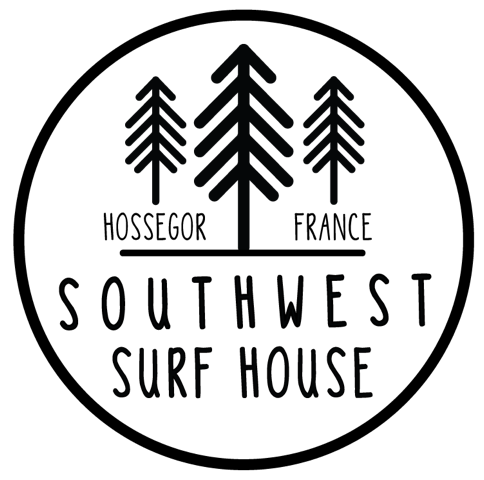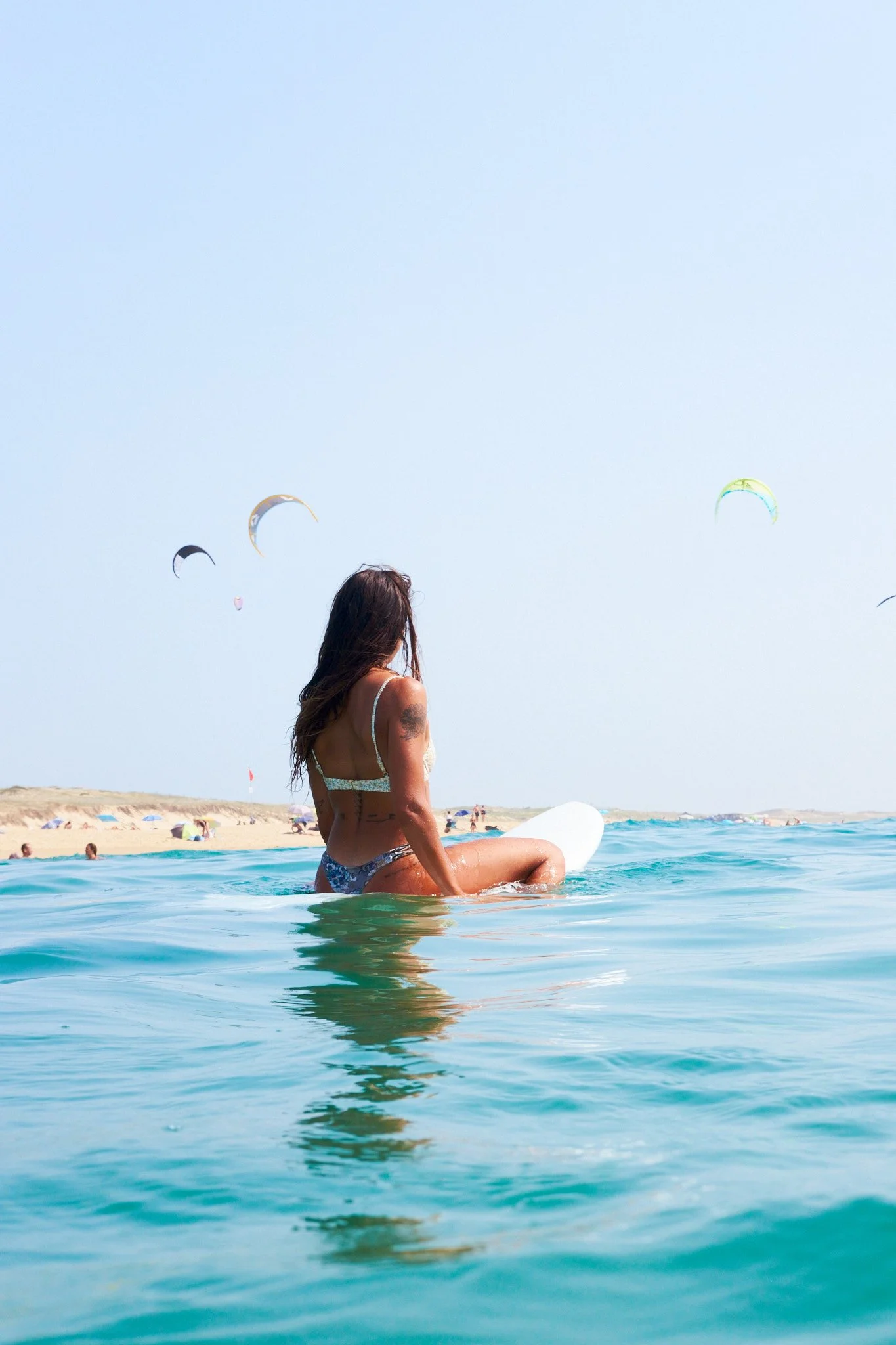The Morning Ritual
The morning light hits the dunes like a soft drumroll.
You open your phone and check the surf app, five glowing stars.
The screen says perfect conditions. The sea says otherwise.
You stand there, board under your arm, watching walls of whitewater fold in on themselves. Closeouts, chaos, and zero chance of making it out back.
It’s one of the small tragedies of modern surfing: the forecast said “go,” but the ocean said “no.”
Apps are powerful tools, we use them every day at Southwest Surf House, but they can also be a trap. Those neat color codes and star ratings make the ocean look predictable, like a video game with set conditions.
5 stars means we’re on right?
If only it were that simple.
Where Forecasts Go Wrong
Forecast apps run on algorithms. They crunch swell data, wind speeds, tide charts, all good things, but they don’t know the banks, or consider Hossegors massive tidal swings.
They do there best but have never predicted the exact time of a glass off, or when the wind picks up a little too much.
They don’t know how much swell a beach can hold before it turns into a washing machine.
That’s why we see it all the time: tech-savvy visitors showing up with their boards, chasing five-star forecasts into conditions that locals wouldn’t even wax up for.
The irony is that the same apps that were built to inform have also created a generation of surfers who trust screens more than sand. Offshore wind and huge swells? Five stars.
But for a beach break like Seignosse, that often means double-overhead closeouts, brutal paddle-outs, and zero fun.
It’s not that the apps are wrong, it’s that they only tell half the story.
The Language of the Ocean
A surf forecast isn’t a verdict. It’s a conversation starter.
Swell height, period, direction, and wind, these are clues, not conclusions.
Each tells a small part of a bigger, moving picture.
Swell Height
That number you see; 3ft, 6ft (one meter, two meters), is the average deep-water wave height. It’s not what will hit the beach.
Local sandbanks can magnify or mute it entirely.
Wave Heights in Hossegor
1-2ft (0.3–0.6 m) → mellow, beginner-friendly
2-4 ft (0.6–1.2 m) → playful, shoulder-high
4ft + (1.2 m+) → heavy, expert-only (or great for coffee watching)
Swell Period
Think of this as the heartbeat of the sea.
A short-period swell (4–6s) is quick and messy; a long one (12–15s) means the waves travelled far, carrying more energy and power.
In the Landes, the sweet spot is around 8–12 seconds, enough punch to shape the sand, but not enough to detonate it.
Direction
Seignosse loves a west-northwest swell, so that’s your golden angle.
Too much north, and the waves flatten; too much west, and they close out like guillotines.
Wind
The real deal-breaker.
Offshore (E/SE) = clean and sculpted.
Onshore (W/NW) = chaos.
No wind = the dream.
And here’s the thing most apps can’t tell you: the timing of the wind.
Mornings here are calm, glassy; that early Atlantic magic.
By afternoon, the breeze swings onshore, and the windows shut. But those late afternoon glass offs? No app will predict that, you have to be in it to win it.
The Forecast Illusion
Here’s what we’ve learned guiding surfers season after season:
People rely on the stars, not the story.
Those green boxes on your screen, they simplify something that was never meant to be simple.
They reward offshore winds and big swells without understanding how fragile beach breaks really are.
When you reduce the ocean to a star rating, you lose the art of interpretation.
A forecast might call it five stars. But if the swell’s too big for your spot, it’s zero stars in reality. The amount of amazing sesions we have had with a luck luster surf forecast will surprise you.
We see guests learn this the good way; through experience. They arrive staring at numbers, but by week’s end, they’re reading the sea instead: paddling out and getting a front row seat of whats going on.
That’s real forecasting.
How to Actually Use Surf Apps
Use them, but don’t worship them.
Let the data guide your curiosity, not dictate your decisions.
Here’s how we approach it at the Surf House:
Check the charts, not the stars. Look at swell direction, period, and tide first.
Think local. Know which beaches hold what size. A 8ft (2.3 m) NW swell might be perfect at Santocha, but maxed-out at Les Bourdaines.
Watch the wind pattern. Mornings here are gold; glassy and quiet.
Compare sources. Apps like Windguru, Surfline, and Magicseaweed all interpret data differently. Cross-check them.
Then go look. The best forecast is your own two eyes.
Trust the Sand, Not the Screen
No app will ever understand the biggest factor in Hossegor; the sand banks.
Forecasts are a starting point.
The real call happens on the dune, staring at the horizon, feeling the wind on your face.
At Southwest Southwest Surf House House, that’s what we teach through our surf guiding, not how to chase the stars, but how to think like a local. It’s not about blind optimism or skepticism; it’s about awareness.
The ocean isn’t an algorithm. It’s alive, unpredictable, and, if you listen closely, bountyful.
Closing Thoughts
Forecasts are great; until you treat them like gospel.
The ocean doesn’t read your app and definitely doesn’t care how many stars you give her.
By all means, check the charts. But the real call’s made on the sand. Or better yet, ask one of our surf guides; they’ve already had their dawn coffee watching the waves and the plans dialled.





